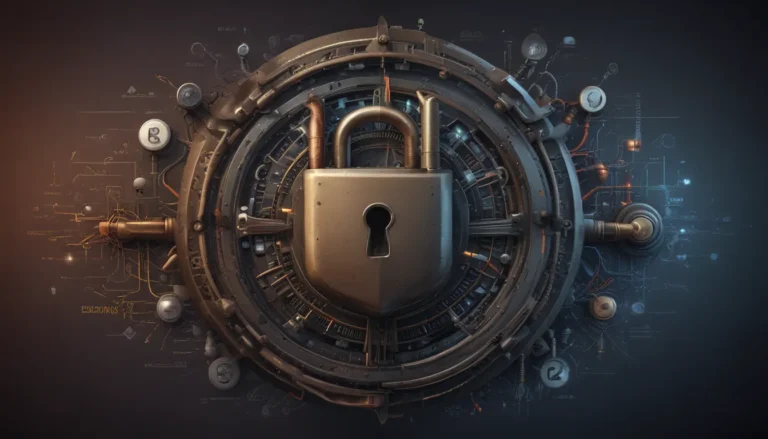A Note About Images: The images used in our articles are for illustration purposes only and may not exactly match the content. They are meant to engage readers, but the text should be relied upon for accurate information.
In today’s ever-evolving digital realm, protecting computer networks from cyber threats has become a top priority. Endpoint Detection and Response (EDR) emerges as a crucial weapon in this ongoing battle. With its ability to monitor endpoint and network events, store data for further analysis, detection, investigation, reporting, and alerting, EDR provides a proactive defense against malware and other cyber perils. As cyber-attacks grow more sophisticated, understanding the significance and capabilities of EDR is paramount for individuals aiming to fortify their cybersecurity measures. From real-time monitoring to advanced threat hunting, EDR encompasses a vital defense layer essential for modern cybersecurity strategies. Here, we delve into 20 illuminating facts about EDR, shedding light on its importance and its role in safeguarding digital assets from potential cyber threats.
Unraveling EDR: A Concise Overview
Endpoint Detection and Response (EDR) serves as a cybersecurity technology that monitors end-user devices, aiming to detect and respond to cyber threats. Unlike conventional antivirus software, EDR offers comprehensive visibility into the endpoint’s status, capturing and storing data for in-depth analysis of threat patterns over time.
- EDR solutions are crafted to identify threats that elude traditional security measures, augmenting defense against sophisticated attacks.
The Mechanics Behind EDR
At its core, EDR operates by continuously monitoring and amassing data from endpoints, encompassing system processes, network connections, and file modifications. EDR tools are equipped to identify threats and isolate affected endpoints, curtailing the spread of potential dangers.
- EDR tools leverage advanced analytics to pinpoint suspicious behavior indicative of a cyber attack.
- These systems can swiftly respond to threats, streamlining incident response with minimal manual intervention.
The Revolution of EDR
EDR technology has undergone significant evolution since its inception, expanding from malware-focused detection to combatting a wide array of sophisticated cyber threats.
- Modern EDR systems can detect ransomware, phishing attacks, zero-day exploits, and other advanced threats.
- Integration of artificial intelligence and machine learning has revolutionized EDR systems, enabling them to discern patterns and anomalies imperceptible to human observers.
The Value Proposition of EDR
Deploying an EDR solution presents several advantages for organizations seeking to enhance their cybersecurity posture.
- Real-time monitoring and detection by EDR facilitate swift identification and response to threats.
- By storing and scrutinizing endpoint data, EDR aids in understanding attack vectors, thereby fortifying defenses against future incidents.
- EDR solutions automate responses to common threats, alleviating the burden on security teams.
Hurdles and Cognitions
While EDR offers an array of benefits, organizations must contend with a few challenges when implementing these systems.
- False positives pose a significant challenge, diverting security resources from genuine threats.
- EDR systems demand skilled personnel to manage and interpret the copious amounts of data they generate, constituting a hurdle for organizations lacking cybersecurity expertise.
Path Forward for EDR
As cyber threats evolve, so does EDR technology, with future advancements poised to enhance accuracy, cut down false positives, and bolster integration with other security tools for a seamless defense strategy.
- Predictive analytics and deeper machine learning integration are anticipated to play a pivotal role in the next wave of EDR systems, enabling early detection of potential threats.
- Cloud-based EDR solutions are on the rise, offering scalability and ease of deployment, particularly beneficial for small and medium-sized enterprises.
EDR and Compliance Mandates
For numerous organizations, regulatory compliance acts as a primary driver for EDR adoption.
- EDR aids in meeting compliance requirements by furnishing detailed logs of endpoint activities essential for audits.
- Regulations such as the General Data Protection Regulation (GDPR) mandate companies to detect and report breaches, a function facilitated by EDR solutions.
Navigating the EDR Landscape
Selecting the right EDR solution hinges on various factors like organizational size, industry, and specific security requirements.
- Opt for an EDR solution that seamlessly integrates with existing security tools and infrastructure for a robust defense posture.
- Evaluate the level of support and training offered by the EDR vendor, critical for effective deployment and operation.
EDR: A Pillar of Modern Cybersecurity
In today’s digital domain, EDR has emerged as an indispensable tool in combatting cyber threats.
- EDR’s real-time threat detection and response serve as a critical defense layer complementing traditional security mechanisms.
- As cyber threats intensify in complexity and volume, EDR’s role in securing endpoints and organizational data cannot be overstated.
- The continuous development of EDR technology mirrors the shift towards proactive and intelligent cybersecurity solutions.
- The efficacy of an EDR solution lies in its integration into a holistic security strategy, emphasizing the importance of a comprehensive approach to thwarting cyber threats.
Building the EDR Puzzle
Endpoint Detection and Response (EDR) serves as more than a mere tool; it constitutes a pivotal component in the cybersecurity arsenal for businesses across the spectrum. With cyber threats evolving rapidly, a robust EDR system is no longer a luxury but a necessity. These systems offer unparalleled visibility into network operations, empowering IT professionals to identify, investigate, and respond to threats before they wreak havoc. Remember, the goal isn’t just to repel attacks but to anticipate threats proactively. By integrating EDR into your cybersecurity framework today, you aren’t just defending your endpoints; you’re fortifying the integrity of your entire digital infrastructure. Let’s not wait for a breach to underscore the significance of EDR. Instead, let’s proactively fortify our defenses today for a more secure tomorrow.






